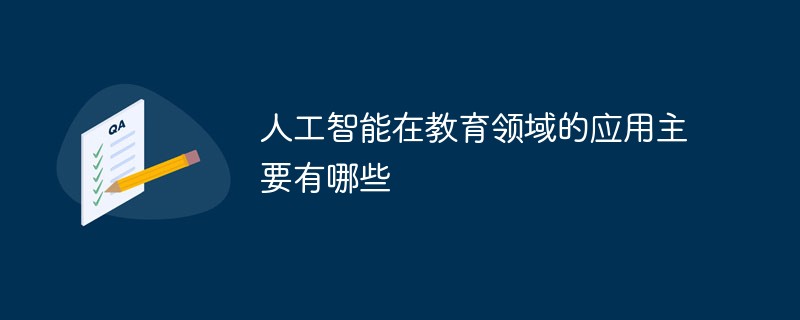
The increasing popularity of Internet of Things (IoT) applications and smart devices has led to the coexistence of 4G and 5G networks. Mobile network operators (MNOs) gain efficiencies and save costs by consolidating their lawful interception solutions.
These solutions are one of many sources for increasingly complex law enforcement missions, with the vast number of different devices connected to the internet. The range of potential sources of information under investigation presents unique challenges to legitimate intelligence gathering.
Multi-Purpose
IoT devices have a variety of uses including consumer, commercial and industrial, each of which offers different opportunities for useful interception. Even in the consumer sector, IoT applications include artificial intelligence assistants, smart home appliances, and critical safety systems for autonomous driving
To provide rapid response in these uses, mobile network operators place computer processing power close to the data Generate network edges for points. This is the foundation of Multi-Access Edge Computing (MEC), a core enabler of the Internet of Things.
In cloud-enabled network topologies, edge network services are dynamically created and eliminated as needed, making interception complex compared to older static networks with predictable structures. Additionally, data created and consumed at the edge does not return to the network core. Therefore, interception of this traffic must be done at the edge, which requires minute-by-minute responses to changing network topologies.
Custom NetworkServices that perform 5G network workloads, such as User Plane Functions (UPF) and Virtual Radio Access Network (vRAN), based on virtual network functions (VNF), which replicates core network elements at the edge of the network.
These virtual functions are built to be wired together to implement more complex functionality and can be instantiated and terminated on demand at any edge location on the network.
For example, when a UPF instance is started at the edge of the network for packet delivery, the platform starts the Communication Content Packet Aggregator (CCPAG). It provides an X3 interface for transmitting locally intercepted traffic to a centralized intermediary entity, or directly to the requesting authority.
These dynamic architectures are often very complex and change rapidly, making software-defined networking (including features such as high-speed discovery and routing table updates) important in maintaining their performance
Information Centric NetworkInformation Centric Network (ICN) automates network discovery and visibility across dynamically defined networks. For example, if a local outage of UPF is established at the edge and a file cache is created there, the ICN service can identify changes to legitimate intelligence agencies, providing an up-to-date understanding of the local network environment.
Network slicing is one of the key technologies of 5G networks, which can provide different service levels in a general network. From a network traffic perspective, a slicing is a logical network overlay that allows traffic to be prioritized by service class
This allows critical flows with low latency and security requirements to have high priority, such as emergency call. These characteristics of network traffic are part of the complete picture required by intermediation platforms.
Unified interception of 4G and 5GThe transition from 4G to 5G networks is often gradual and uneven. On the one hand, many operators are offering 5G services through their 4G core. On the other hand, many are deploying 4G services using the same distributed cloud-native architecture as 5G. However, ETSI defines CCPAG as a 5G technology, which is a significant limitation in a world where MNO networks consist of various combinations of 4G and 5G technologies, including at the network edge.
The Content Packet Aggregator (XCPAG) uniquely extends CCPAG functionality beyond the 5G network to include 4G traffic. XCPAG supports interception of 5G and 4G data while maintaining CCPAG industry-standard fidelity, enabling it to interoperate with existing CCPAG implementations across vendors through a cloud-ready architecture. XCPAG is able to respond to network topology changes with low latency, including the instantiation of new VNFs.
Surges in network demand, such as major sporting events, may cause many VNFs to be launched at specific network edge sites. In addition to discovering and co-locating XCPAG instances where needed, the platform maintains security features and certificates to quickly establish and maintain secure connections to every on-demand 4G and 5G network element, allowing first responders to make Respond efficiently.
As more IoT devices connect to 4G and 5G networks, the ability to unify basic lawful intelligence functions across networks is critical to public safety.
The above is the detailed content of How to legally intercept IoT traffic at the network edge?. For more information, please follow other related articles on the PHP Chinese website!
 2023年机器学习的十大概念和技术Apr 04, 2023 pm 12:30 PM
2023年机器学习的十大概念和技术Apr 04, 2023 pm 12:30 PM机器学习是一个不断发展的学科,一直在创造新的想法和技术。本文罗列了2023年机器学习的十大概念和技术。 本文罗列了2023年机器学习的十大概念和技术。2023年机器学习的十大概念和技术是一个教计算机从数据中学习的过程,无需明确的编程。机器学习是一个不断发展的学科,一直在创造新的想法和技术。为了保持领先,数据科学家应该关注其中一些网站,以跟上最新的发展。这将有助于了解机器学习中的技术如何在实践中使用,并为自己的业务或工作领域中的可能应用提供想法。2023年机器学习的十大概念和技术:1. 深度神经网
 人工智能自动获取知识和技能,实现自我完善的过程是什么Aug 24, 2022 am 11:57 AM
人工智能自动获取知识和技能,实现自我完善的过程是什么Aug 24, 2022 am 11:57 AM实现自我完善的过程是“机器学习”。机器学习是人工智能核心,是使计算机具有智能的根本途径;它使计算机能模拟人的学习行为,自动地通过学习来获取知识和技能,不断改善性能,实现自我完善。机器学习主要研究三方面问题:1、学习机理,人类获取知识、技能和抽象概念的天赋能力;2、学习方法,对生物学习机理进行简化的基础上,用计算的方法进行再现;3、学习系统,能够在一定程度上实现机器学习的系统。
 超参数优化比较之网格搜索、随机搜索和贝叶斯优化Apr 04, 2023 pm 12:05 PM
超参数优化比较之网格搜索、随机搜索和贝叶斯优化Apr 04, 2023 pm 12:05 PM本文将详细介绍用来提高机器学习效果的最常见的超参数优化方法。 译者 | 朱先忠审校 | 孙淑娟简介通常,在尝试改进机器学习模型时,人们首先想到的解决方案是添加更多的训练数据。额外的数据通常是有帮助(在某些情况下除外)的,但生成高质量的数据可能非常昂贵。通过使用现有数据获得最佳模型性能,超参数优化可以节省我们的时间和资源。顾名思义,超参数优化是为机器学习模型确定最佳超参数组合以满足优化函数(即,给定研究中的数据集,最大化模型的性能)的过程。换句话说,每个模型都会提供多个有关选项的调整“按钮
 得益于OpenAI技术,微软必应的搜索流量超过谷歌Mar 31, 2023 pm 10:38 PM
得益于OpenAI技术,微软必应的搜索流量超过谷歌Mar 31, 2023 pm 10:38 PM截至3月20日的数据显示,自微软2月7日推出其人工智能版本以来,必应搜索引擎的页面访问量增加了15.8%,而Alphabet旗下的谷歌搜索引擎则下降了近1%。 3月23日消息,外媒报道称,分析公司Similarweb的数据显示,在整合了OpenAI的技术后,微软旗下的必应在页面访问量方面实现了更多的增长。截至3月20日的数据显示,自微软2月7日推出其人工智能版本以来,必应搜索引擎的页面访问量增加了15.8%,而Alphabet旗下的谷歌搜索引擎则下降了近1%。这些数据是微软在与谷歌争夺生
 荣耀的人工智能助手叫什么名字Sep 06, 2022 pm 03:31 PM
荣耀的人工智能助手叫什么名字Sep 06, 2022 pm 03:31 PM荣耀的人工智能助手叫“YOYO”,也即悠悠;YOYO除了能够实现语音操控等基本功能之外,还拥有智慧视觉、智慧识屏、情景智能、智慧搜索等功能,可以在系统设置页面中的智慧助手里进行相关的设置。
 30行Python代码就可以调用ChatGPT API总结论文的主要内容Apr 04, 2023 pm 12:05 PM
30行Python代码就可以调用ChatGPT API总结论文的主要内容Apr 04, 2023 pm 12:05 PM阅读论文可以说是我们的日常工作之一,论文的数量太多,我们如何快速阅读归纳呢?自从ChatGPT出现以后,有很多阅读论文的服务可以使用。其实使用ChatGPT API非常简单,我们只用30行python代码就可以在本地搭建一个自己的应用。 阅读论文可以说是我们的日常工作之一,论文的数量太多,我们如何快速阅读归纳呢?自从ChatGPT出现以后,有很多阅读论文的服务可以使用。其实使用ChatGPT API非常简单,我们只用30行python代码就可以在本地搭建一个自己的应用。使用 Python 和 C
 人工智能在教育领域的应用主要有哪些Dec 14, 2020 pm 05:08 PM
人工智能在教育领域的应用主要有哪些Dec 14, 2020 pm 05:08 PM人工智能在教育领域的应用主要有个性化学习、虚拟导师、教育机器人和场景式教育。人工智能在教育领域的应用目前还处于早期探索阶段,但是潜力却是巨大的。
 人工智能在生活中的应用有哪些Jul 20, 2022 pm 04:47 PM
人工智能在生活中的应用有哪些Jul 20, 2022 pm 04:47 PM人工智能在生活中的应用有:1、虚拟个人助理,使用者可通过声控、文字输入的方式,来完成一些日常生活的小事;2、语音评测,利用云计算技术,将自动口语评测服务放在云端,并开放API接口供客户远程使用;3、无人汽车,主要依靠车内的以计算机系统为主的智能驾驶仪来实现无人驾驶的目标;4、天气预测,通过手机GPRS系统,定位到用户所处的位置,在利用算法,对覆盖全国的雷达图进行数据分析并预测。


Hot AI Tools

Undresser.AI Undress
AI-powered app for creating realistic nude photos

AI Clothes Remover
Online AI tool for removing clothes from photos.

Undress AI Tool
Undress images for free

Clothoff.io
AI clothes remover

AI Hentai Generator
Generate AI Hentai for free.

Hot Article

Hot Tools

Dreamweaver CS6
Visual web development tools

SAP NetWeaver Server Adapter for Eclipse
Integrate Eclipse with SAP NetWeaver application server.

mPDF
mPDF is a PHP library that can generate PDF files from UTF-8 encoded HTML. The original author, Ian Back, wrote mPDF to output PDF files "on the fly" from his website and handle different languages. It is slower than original scripts like HTML2FPDF and produces larger files when using Unicode fonts, but supports CSS styles etc. and has a lot of enhancements. Supports almost all languages, including RTL (Arabic and Hebrew) and CJK (Chinese, Japanese and Korean). Supports nested block-level elements (such as P, DIV),

PhpStorm Mac version
The latest (2018.2.1) professional PHP integrated development tool

Dreamweaver Mac version
Visual web development tools






